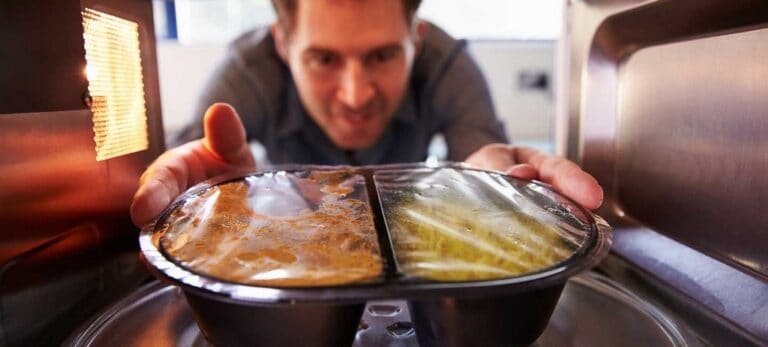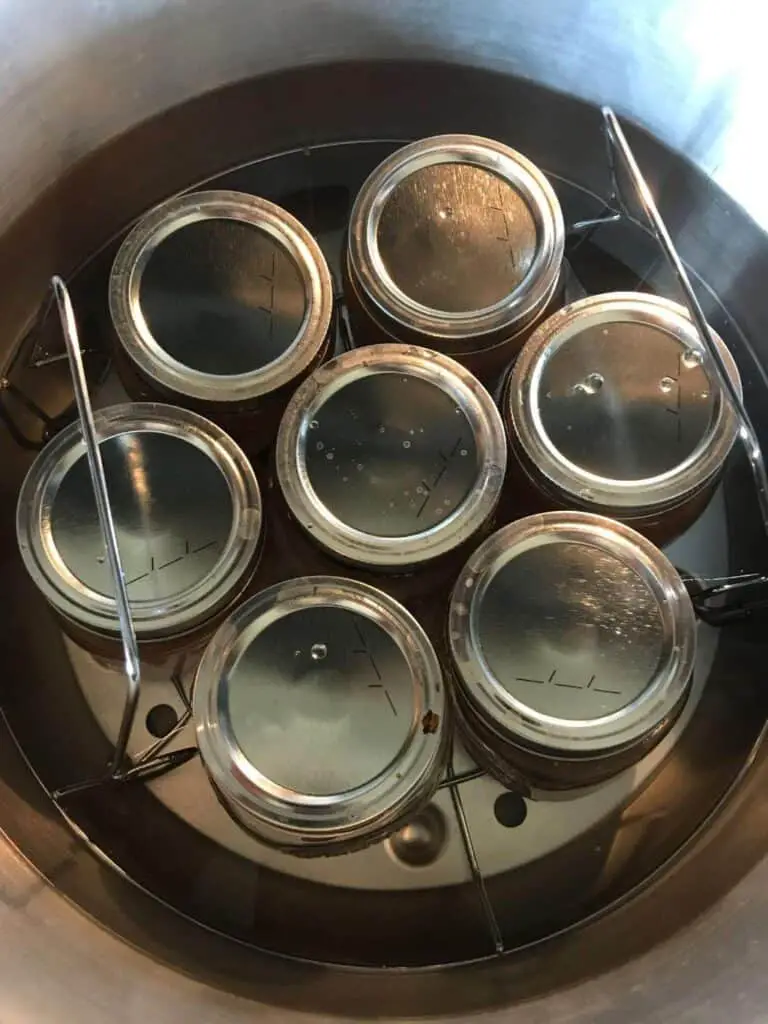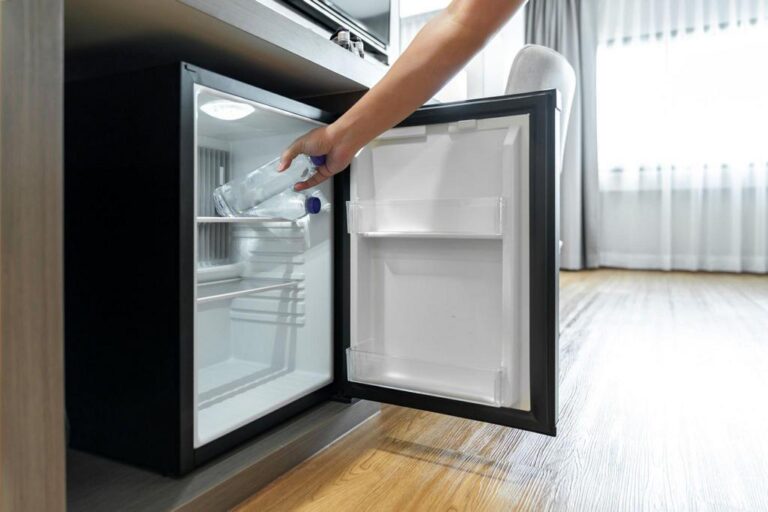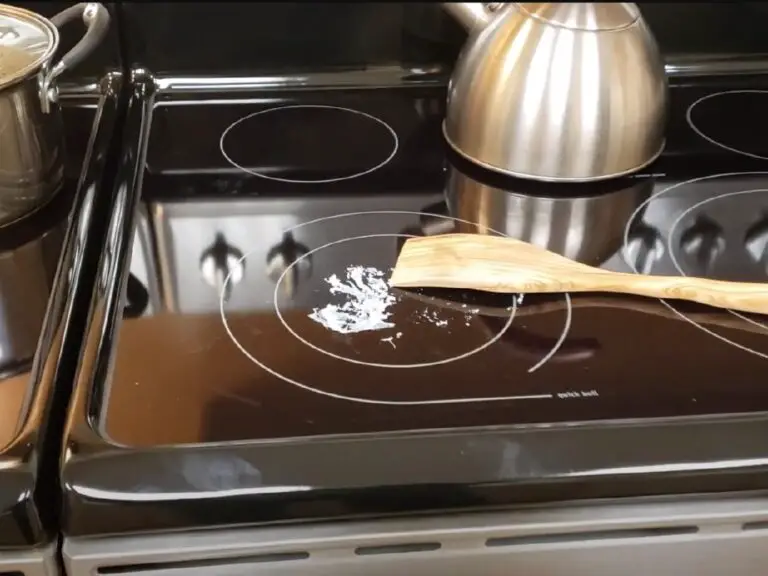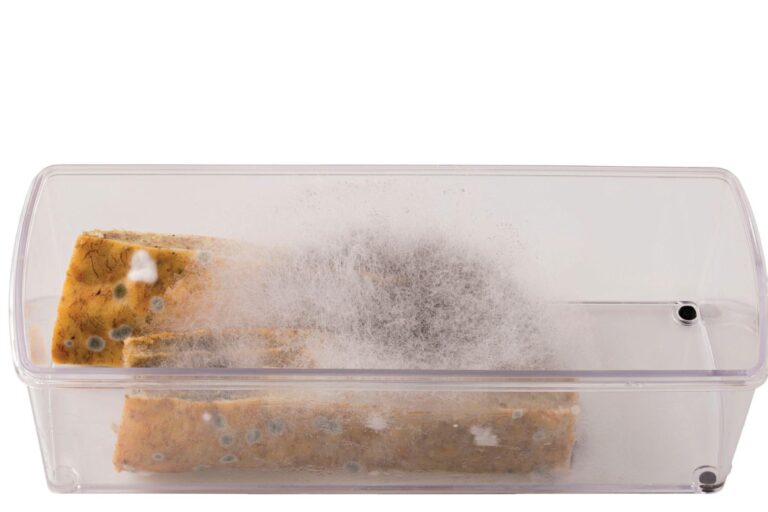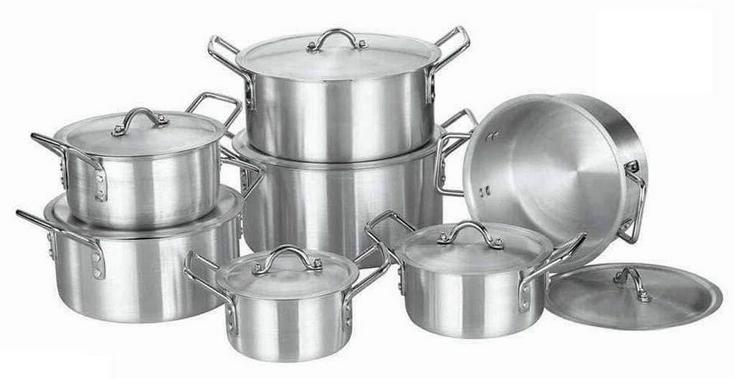Melted Plastic on Electric Stovetop: How To Remove It Safely
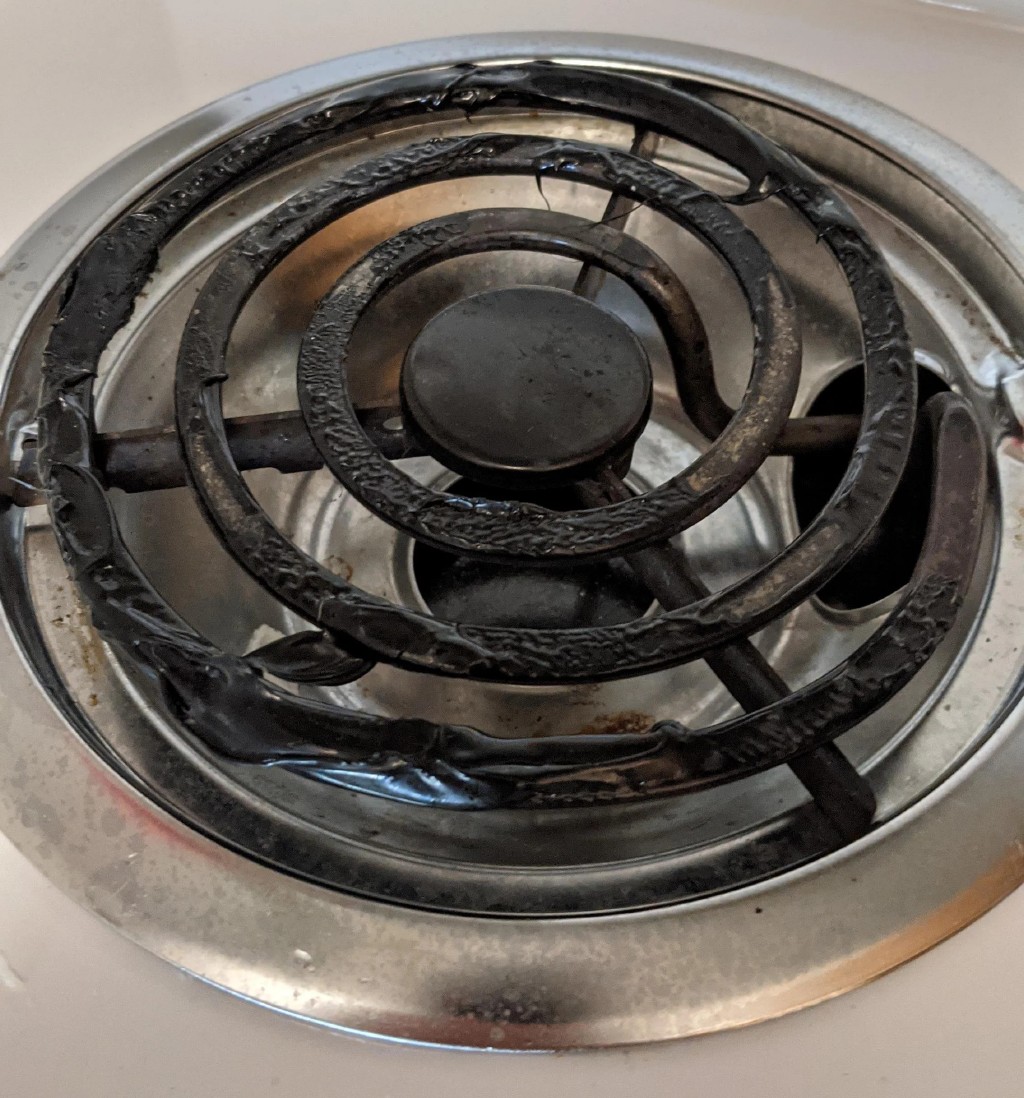
If you have recently found melted plastic on your electric stovetop, then you may be wondering why it happened and how to safely remove it.
You are dealing with a frustrating and potentially dangerous situation and don’t know how to remove it. Don’t let it ruin your cooking experience.
In this blog post, we’ll show you the right steps and tools to take to get melted plastic off your stovetop in a safe way. In addition, we will provide you with advice on how to prevent spills and clean up afterward.
Say goodbye to the mess and hello to a clean and safe kitchen in no time.
What Causes Plastic Melted on Your Electric Stovetop?
Plastic melted on an electric stovetop can be a common issue for many households. It happens when a piece of plastic touches the stove’s heating element and melts onto the surface.
There are several reasons why this can happen, including improper use of cookware, poor stovetop maintenance, and not paying attention while cooking.
One of the most common reasons why plastic melts on an electric stovetop is when the wrong kind of cookware is used. Many people use plastic utensils, containers, or wraps when cooking without realizing that these materials can melt when exposed to high heat. For example, using plastic wrap as a cover for food in the microwave can cause it to melt plastic in the microwave or onto the stovetop if it comes into contact with the heating element.
Another factor that can cause plastic to melt on an electric stovetop is neglect. Food and grease buildup on the stovetop can trap heat and cause the surface to become hot, leading to the melting of plastic. Afterwards, you need to clean the stovetop regularly to prevent this from happening.
Lastly, not paying attention while cooking can also lead to melted plastic on an electric stovetop. Leaving food or plastic cookware on the stove for too long can cause it to melt, especially if the heating element is left on for an extended period of time. Just keep an eye on food and cookware on the stove, especially if they are made of plastic, so that the plastic doesn’t melt.
What Happens When Plastic Is Melted on an Electric Stovetop?
Melting plastic on an electric stovetop can be a frustrating and potentially dangerous situation. When plastic is heated up too much, it can give off toxic fumes and be a fire hazard. To safely and effectively remove the melted plastic, make sure to know what could go wrong and take the right steps.
When plastic is melted on an electric stovetop, it can stick to the surface and be difficult to remove. Plastic can also give off fumes when exposed to high heat, which can be harmful if inhaled. When plastic that has melted comes into contact with the heating element, it can also cause a fire.
How Poisonous Is Melted Plastic?
When melted plastic is burned, it gives off a number of dangerous chemicals, such as dioxins, furans, and polycyclic aromatic hydrocarbons (PAHs). Due to their high toxicity, dioxins and furans can harm the immune system, cause cancer, interfere with reproduction and development, and have other negative health effects. PAHs are also carcinogenic and can cause skin and lung irritation.
Burning plastic can also release toxic chemicals like carbon monoxide, nitrogen oxides, and particulate matter into the air.
WARNING
Inhaling the fumes from melted plastic can damage the lungs and other organs and cause breathing problems like asthma and bronchitis. Long-term exposure to the toxins released by burning plastic can increase the risk of cancer and other serious health problems. It can also lead to reproductive and developmental problems, including birth defects.
The fumes from burning plastic can also have an adverse impact on the environment. It can hurt plants and animals, make the air and water less healthy, and make climate change worse. So, it’s important to get rid of plastic the right way and not burn it, since that can be bad for people’s health and the environment.
Safety Precautions Before Removing Plastic
Warning About the Danger of Electrical Shock
When plastic melts on an electric stovetop, it can cause an electrical shock, which is very dangerous. First things first, you need to unplug the stove or turn off the power to the stove before attempting to remove the melted plastic. This will prevent any accidental electrical shocks while working on the stovetop.
This will prevent any accidental electrical shocks while working on the stovetop. It is also recommended to confirm that the stove is not connected to a gas supply, as this can also pose a fire risk.
Take note that if you are unsure about your ability to safely remove melted plastic from your electric stovetop, it may be best to call a professional to handle the task. Working on electrical appliances can be dangerous, and it’s better to be safe than sorry.
Tools and Materials Needed
List of required tools and materials
- Putty knife or scraper: This tool will be used to scrape away as much of the melted plastic as possible. A putty knife or scraper with a flat blade will work best for this task.
- Baking soda: Baking soda is a natural cleaning agent that can be mixed with water to create a paste. The paste can be applied to the remaining melted plastic to help loosen it from the stovetop surface.
- Vinegar: A small amount of vinegar can be applied to a cloth and used to wipe down the stovetop after the plastic has been removed. This will help remove any remaining residue and leave the stovetop clean and shiny.
- Water: Water will be used to make the paste with baking soda and also to wipe down the stovetop.
- Cloth: A damp cloth will be used to wipe down the stovetop after the plastic has been removed and to apply the vinegar to the stovetop surface.
- Gloves: If you are sensitive to cleaning products, you might want to wear gloves during this process.
Note: Use only tools and materials that are safe for use on stovetops. Avoid using abrasive materials that could scratch or damage the surface of the stove. Check the stovetop’s manual or the manufacturer’s website for specific cleaning instructions or suggestions.
Related: Melted Plastic in the Oven – Can I Still Eat Food?
How To Remove Melted Plastic from an Electric Stovetop
Step 1: Allow the stovetop to cool completely. Before you try to get the melted plastic off the stovetop, let it cool all the way down. This will prevent any burns from the heat and make it easier to remove the plastic.
Step 2: Scrape away as much of the melted plastic as possible with a putty knife or scraper. Using a putty knife or scraper, gently scrape away as much of the melted plastic as possible. It’s important to use light pressure and to be careful not to scratch the stovetop surface.
Step 3: Mix water and baking soda to make a paste. You make the paste by combining water and baking soda. The consistency should be thick enough to stick to the melted plastic, but not so thick that it is difficult to spread.
Step 4: Apply the paste to the remaining melted plastic and let it sit for 15 to 20 minutes. Put the baking soda paste on the remaining melted plastic with a cloth or a brush. Allow the paste to sit for 15–20 minutes. This will help loosen the plastic from the stovetop surface.
Step 5: Scrape away the remaining plastic with a putty knife or scraper. Using a putty knife or scraper, gently scrape away the remaining plastic. Repeat steps 3 and 4 if necessary.
Step 6: Wipe down the stovetop with a damp cloth and dry it thoroughly. Once all of the plastic has been removed, wipe down the stovetop with a damp cloth to remove any remaining residue. Dry the stovetop thoroughly with a clean cloth.
Step 7: Apply a small amount of vinegar to a cloth and wipe down the stovetop. Apply a small amount of vinegar to a clean cloth and wipe down the stovetop to remove any remaining residue and to leave the stovetop clean and shiny.
Note: Be patient and take your time during this process. Melted plastic can be hard to get off the stovetop, and it may take more than one try to get it all off. If the plastic is not coming off with the above steps, it is recommended to repeat the process or consider seeking professional help.
How To Prevent Melted Plastic on Electric Stovetop
- Use stovetop covers: One way to prevent melted plastic from getting on your electric stovetop is to use stovetop covers. These can be placed over the stovetop burner and will prevent plastic from coming into contact with the heating element.
- Keep the stovetop clean: Keeping the stovetop clean can help prevent melted plastic from sticking to it. Regularly wiping down the stovetop with a damp cloth can help remove any residue that may attract plastic.
- Be mindful of what you are cooking: Be mindful of what you are cooking and what materials you are using. Avoid using plastic utensils or cookware on the stovetop, as these can easily melt and cause a mess.
- Watch your cooking: Keep an eye on your cooking and avoid leaving the stovetop unattended. Melted plastic can happen very quickly, you should be aware of what is happening on the stovetop at all times.
- Use caution with plastic bags or containers: When using plastic bags or containers on the stovetop, make sure to use caution. These items should not be placed directly on the stovetop, as they can melt and cause a mess.
- Keep a fire extinguisher nearby: It is critical to have a fire extinguisher nearby in case of a fire. Melted plastic can cause a fire, and having an extinguisher nearby can help prevent it from spreading.
Conclusion
In conclusion, plastic that has melted on an electric stovetop can be annoying and could be dangerous. Melted plastic can be removed safely and effectively, though, if you follow the right steps and use the right tools.
The key is to be patient and take your time during the removal process. It might take a few tries to get all of the plastic off, but if you keep trying and pay close attention to the details, you can get the stovetop back to how it was before.
To stop this from happening again, you should use stovetop covers, keep the stovetop clean, pay attention to what you are cooking on the stove, and keep a fire extinguisher close by.

